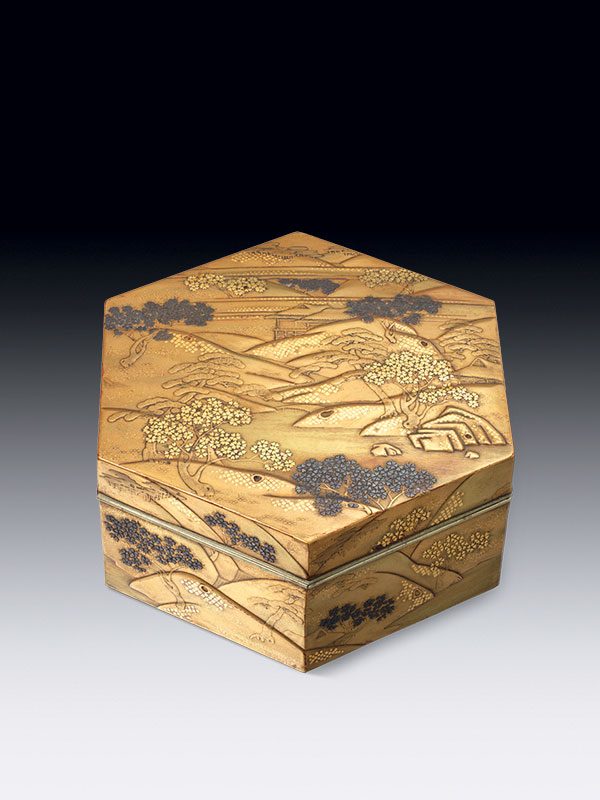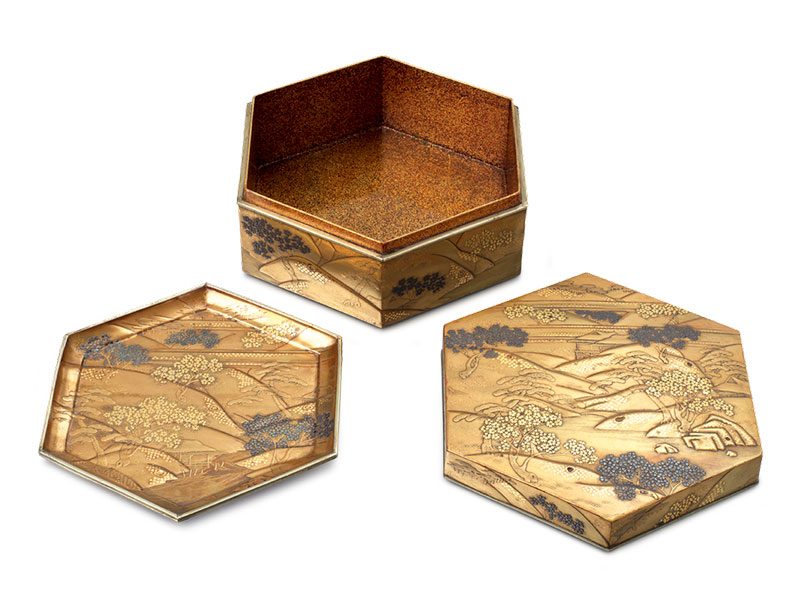Lacquer box and cover
Japan, Edo period, 1603 – 1868
A lacquer box and cover of hexagonal shape with a corresponding drop-in tray. The sides, tray and slightly bowed cover are all decorated in gold-ground maki-e with a wooded, hilly landscape, in which thatched buildings can be glimpsed. The details of the leaves are minutely inlaid in silver and gold hiramaki-e. The interior of the box, underside of the tray and the inside of the cover are decorated in sprinkled nashiji. The rim of the box, the tray and the cover are bound in fine silver.
SOLD
Maki-e (sprinkled picture) is a technique used by Japanese lacquerers who sprinkled gold or silver powder as a decoration. The technique was developed mainly in the Heian period (794 – 1185) and blossomed in the Edo period (1603 – 1868), as we can see in this wonderful box. Takamakie (or “raised maki-e”) is one of the three major techniques in maki-e making. It involves building up design patterns above the surface through a mixture of metal powder, lacquer, and charcoal or clay dust.


